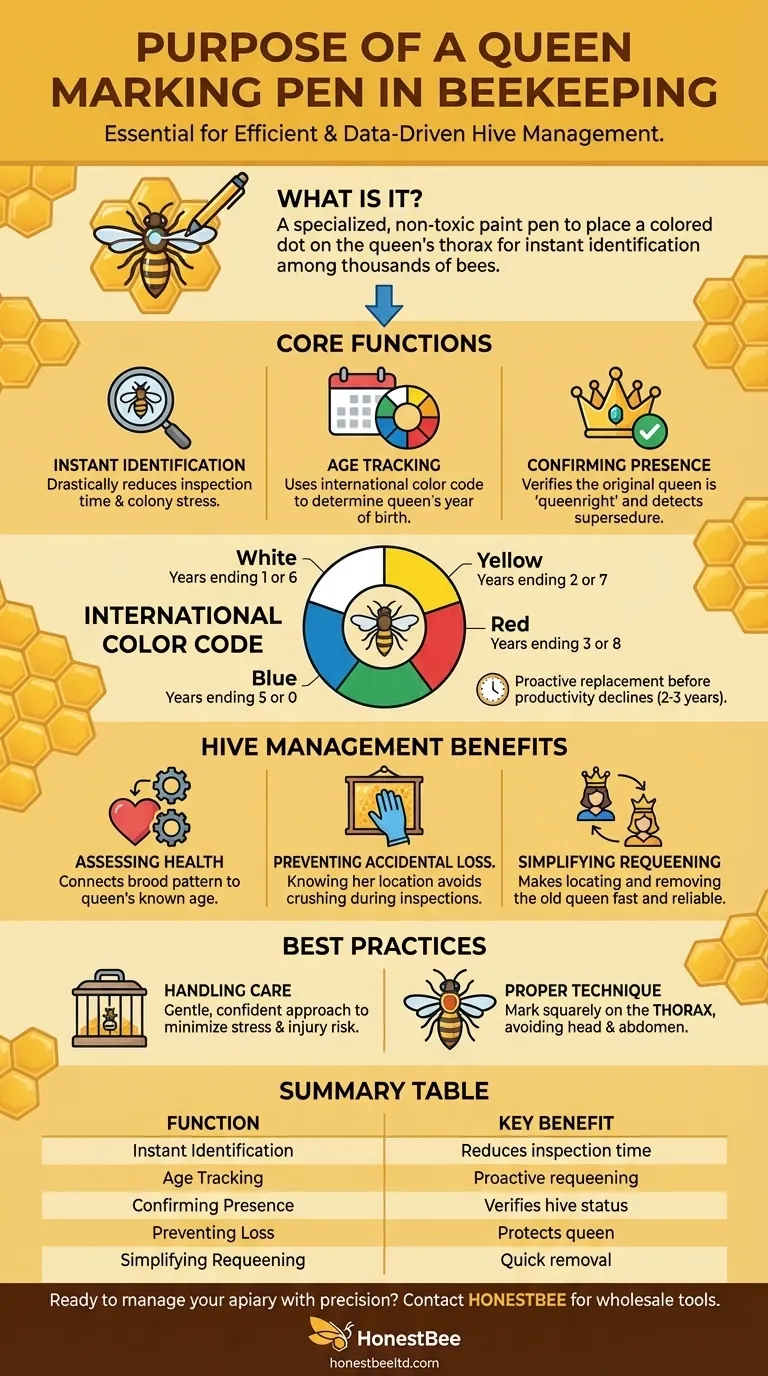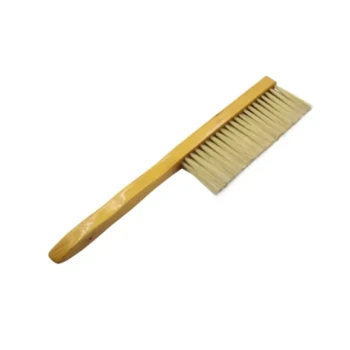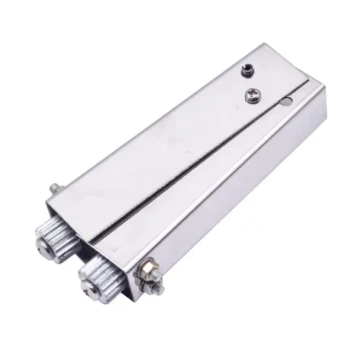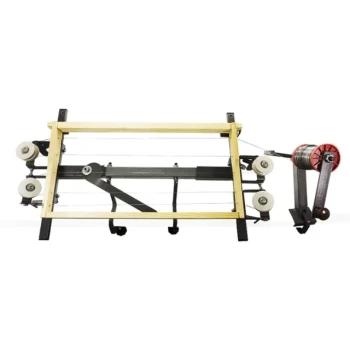At its core, a queen marking pen is a specialized, non-toxic paint pen used to place a small, colored dot on the thorax of a queen bee. This single action makes her instantly identifiable among the tens of thousands of other bees in the hive. This simple visual cue allows a beekeeper to quickly assess the queen's presence, age, and status, turning a potentially lengthy hive inspection into a far more efficient process.
The purpose of marking a queen extends far beyond simply finding her. It is a fundamental practice for effective hive management, providing immediate, crucial data about the colony's age, stability, and productivity with a single glance.

The Core Functions of Marking a Queen
Marking a queen bee serves several distinct and critical purposes. Each one provides the beekeeper with information that is vital for making sound management decisions.
Instant Identification During Inspections
A mature beehive can have over 50,000 bees. Finding one specific bee—the queen—can be a time-consuming and disruptive task.
A brightly colored dot on her back makes her stand out immediately. This drastically reduces the time needed for inspections, which in turn means less stress on the colony.
Tracking the Queen's Age
An international color code is used to signify the year the queen was born or introduced. This code rotates through five colors, corresponding to the last digit of the year.
- Years ending in 1 or 6: White
- Years ending in 2 or 7: Yellow
- Years ending in 3 or 8: Red
- Years ending in 4 or 9: Green
- Years ending in 5 or 0: Blue
Knowing a queen's age is critical because her egg-laying productivity typically declines after two to three years. A beekeeper can proactively plan to replace an aging queen before her decline impacts the colony's population and health.
Confirming the Queen's Presence
Seeing your marked queen confirms that the hive is queenright and that the original queen has not been quietly replaced by the colony in an event called supersedure.
If the marked queen is gone and you see a new, unmarked queen, you know the colony has recently requeened itself. This is a vital piece of information about the colony's internal state.
Why This Information is Critical for Hive Management
The data you gain from a marked queen directly translates into better, more proactive beekeeping. It shifts your role from being reactive to being strategic.
Assessing Colony Health and Vigor
When you know you have a young, vigorous queen (e.g., marked with this year's color), you expect to see a solid, productive brood pattern.
If you see a poor brood pattern but know the queen is young, it points to other potential problems like disease, poor nutrition, or a bad mating. If the queen is old, a declining pattern is expected and tells you it's time to requeen.
Preventing Accidental Loss
The queen is the single most important individual in the colony. Accidentally crushing, dropping, or removing her during an inspection can be catastrophic.
When she is marked, you always know her location as you move frames and boxes, dramatically reducing the risk of accidentally harming her.
Simplifying Requeening
When you decide to introduce a new queen to a hive, the old queen must first be removed. Finding an unmarked queen for removal can be a frustrating and difficult search.
A marked queen can be located and removed in minutes, making the entire requeening process faster and more reliable.
Understanding the Trade-offs and Best Practices
While highly beneficial, the act of marking a queen is not without minor risks and requires proper technique.
The Risk of Handling the Queen
Catching and holding the queen carries a small but real risk of damaging her. A gentle, confident approach is necessary to minimize stress and prevent injury.
For this reason, many beekeepers prefer to purchase queens that are already marked by the professional breeder.
The Proper Marking Technique
The mark must be placed squarely on the thorax—the hard middle section of her body where the wings and legs attach.
Placing paint on her head could cover her eyes, while paint on her abdomen could interfere with breathing or mating. Always use pens specifically designed for marking queens, as other inks or paints can be toxic to bees.
Making the Right Choice for Your Goal
Deciding to mark your queens is a step toward more precise and confident beekeeping.
- If your primary focus is efficiency: Marking your queen is one of the highest-impact actions you can take to reduce the time and disruption of hive inspections.
- If your primary focus is data-driven beekeeping: The color code provides an essential data point for tracking queen lineage and performance, allowing you to make strategic replacement decisions.
- If you are a new beekeeper: Learning to find and identify your queen is a foundational skill, and a mark makes this process significantly easier, building your confidence and observational abilities.
Ultimately, marking your queen transforms her from an elusive mystery into a known asset, giving you the clarity needed to manage your colonies with confidence.
Summary Table:
| Function | Key Benefit |
|---|---|
| Instant Identification | Drastically reduces inspection time and colony stress. |
| Age Tracking (Color Code) | Enables proactive requeening based on the queen's year of birth. |
| Confirming Queen Presence | Verifies if the hive is queenright or has undergone supersedure. |
| Preventing Accidental Loss | Protects the queen during hive manipulations. |
| Simplifying Requeening | Makes locating and removing the old queen a quick and reliable process. |
Ready to manage your apiary with precision and confidence?
HONESTBEE supplies commercial apiaries and beekeeping equipment distributors with the high-quality, reliable tools needed for professional hive management. Our queen marking pens are just one part of our wholesale-focused range of beekeeping supplies designed to save you time and improve your operational efficiency.
Contact HONESTBEE today to discuss your wholesale needs and discover how our equipment can support your success.
Visual Guide

Related Products
- Queen Bee Marking Pen UNI Medium Point for Queen and Bee Marking
- Queen Bee Marking Pen POSCA Queen Marking Pens for Beekeeping Bee Markers
- Professional Engraved Round Hive Number Tags for Beekeeping
- Wooden Bee Brush with Triple Row Artificial Fiber for Beekeeping
- Plastic Queen Marking Tube Cage with Plunger for Beekeeping
People Also Ask
- What are the advantages of using Uni-Posca markers for Queen marking? A Safe, Precise, and Efficient Solution
- What are the color codes in the queen-marking system? Master Hive Management with the 5-Year Cycle
- What are the benefits of marking queen bees? Boost Hive Health & Management Efficiency
- What is the process for priming a paint pen before marking a Queen bee? Ensure a Safe, Quick Marking Procedure
- How should a Posca pen be prepared for queen marking? Ensure a Safe, Precise Mark Every Time



















